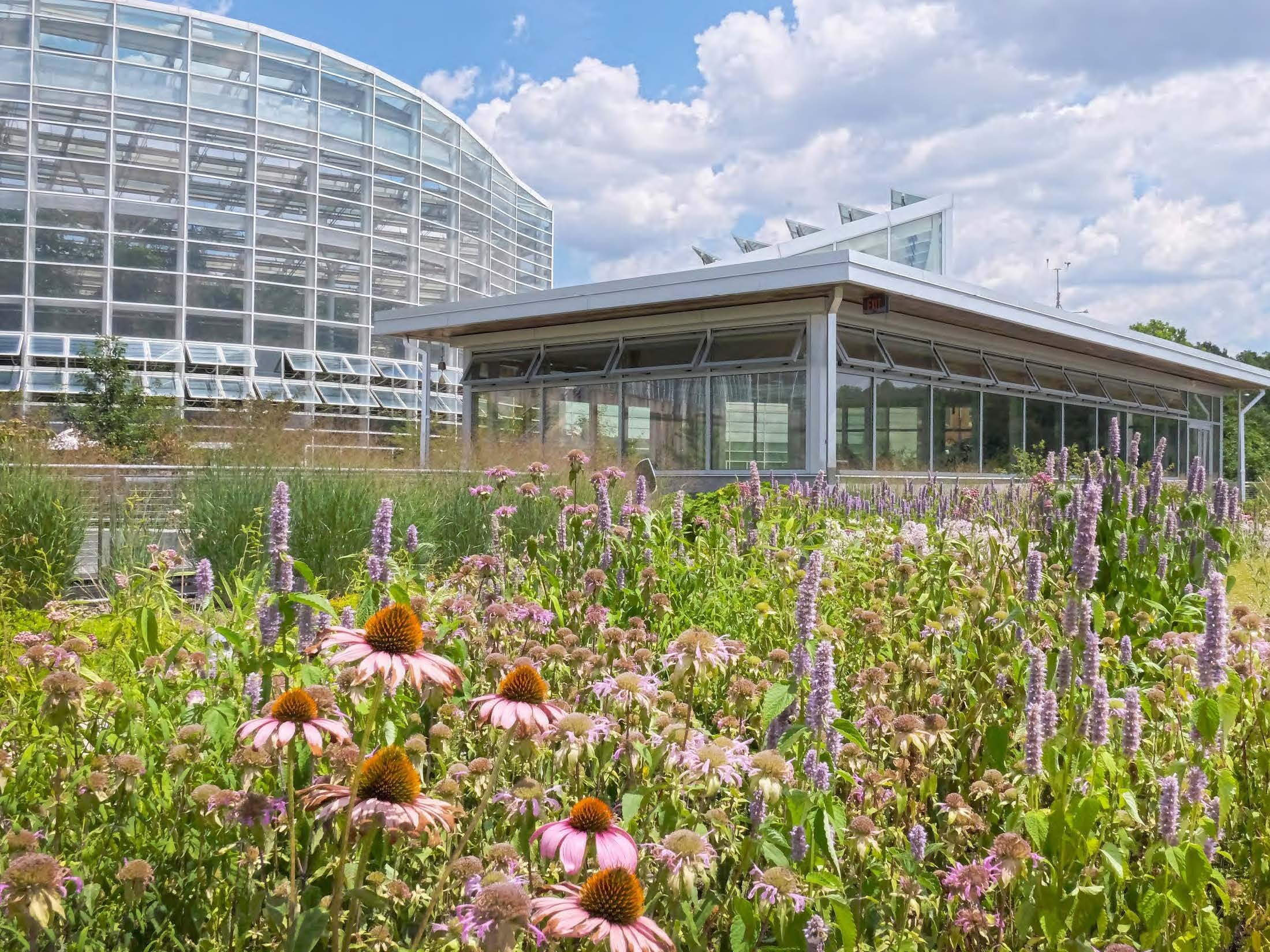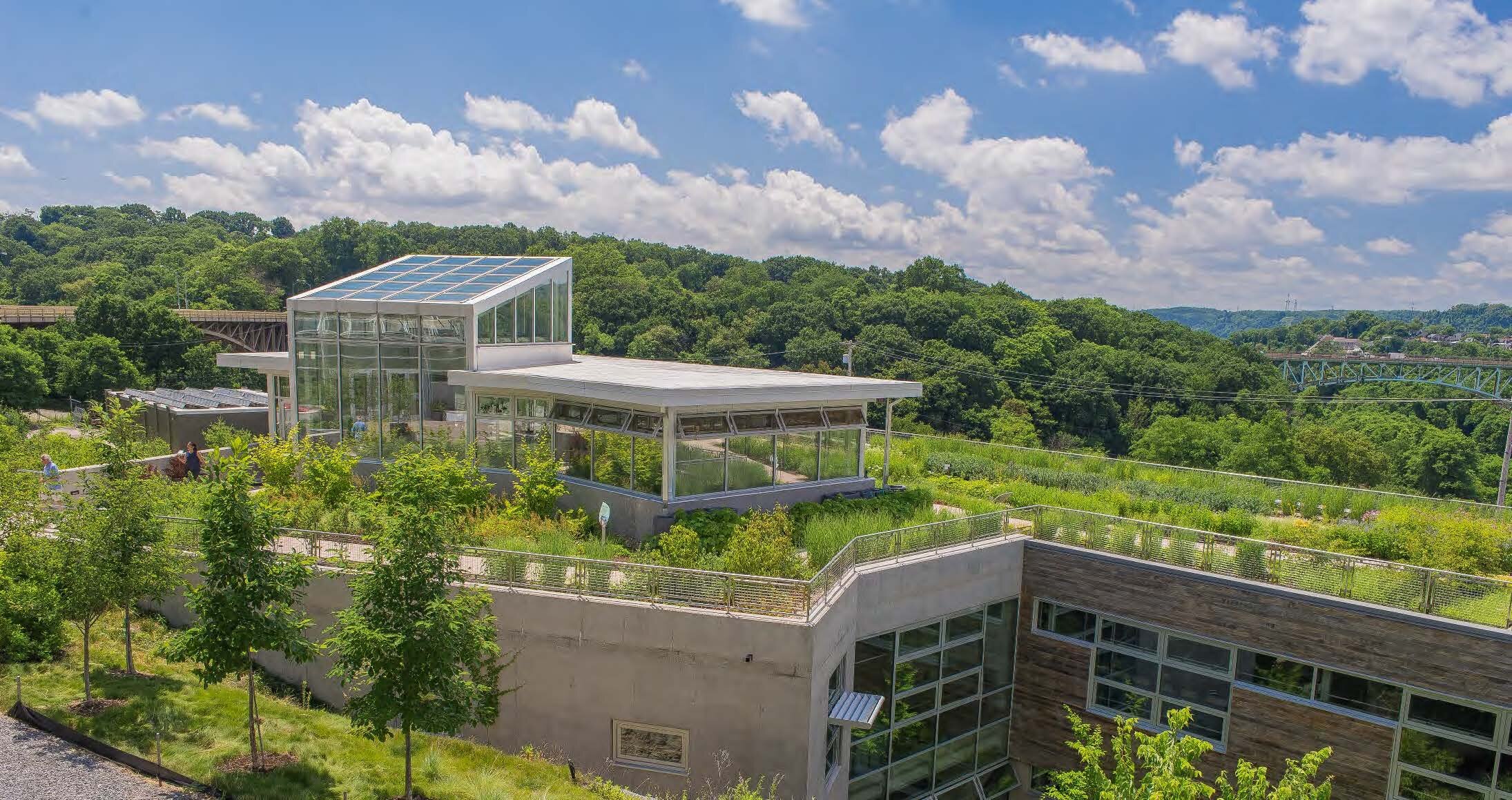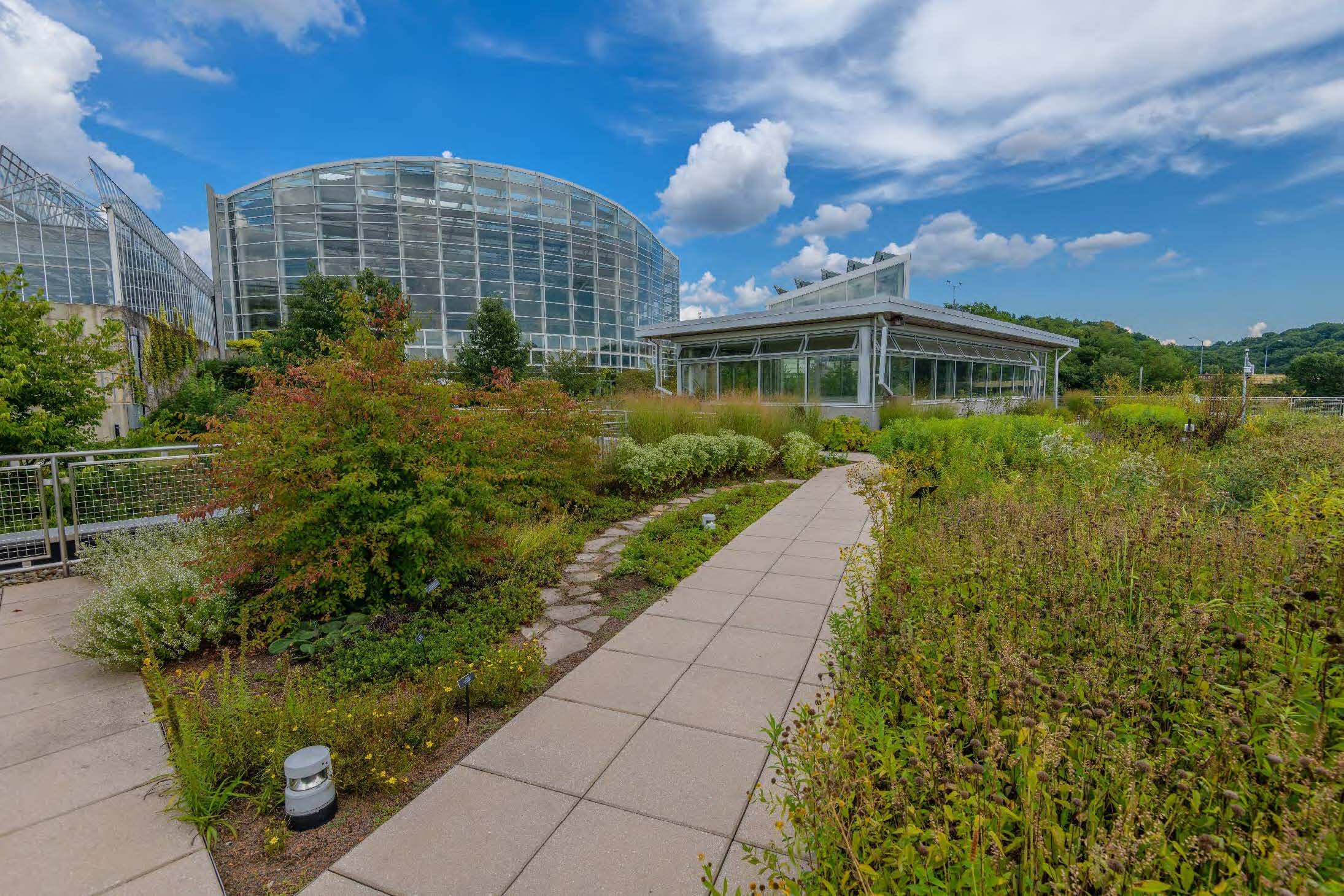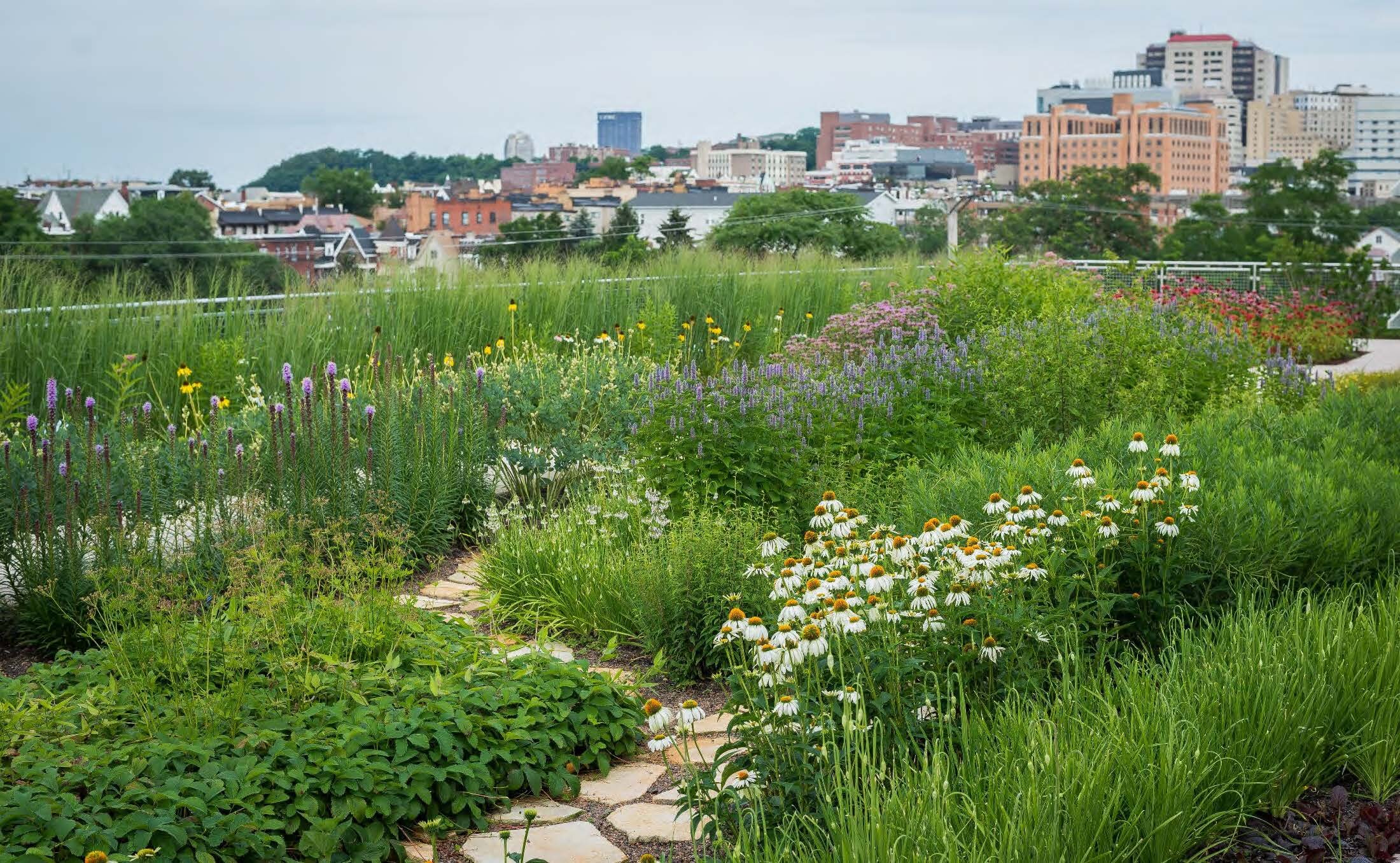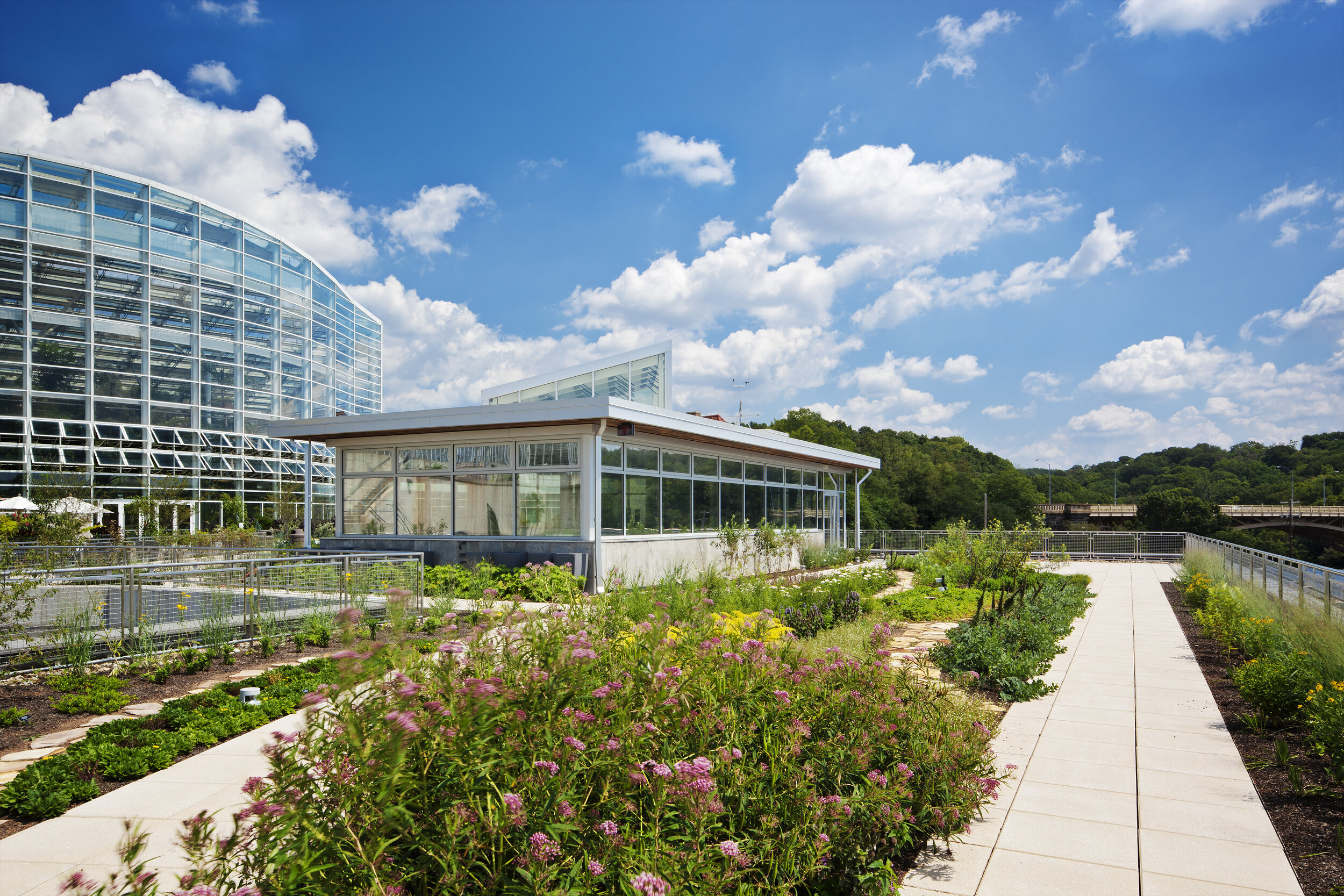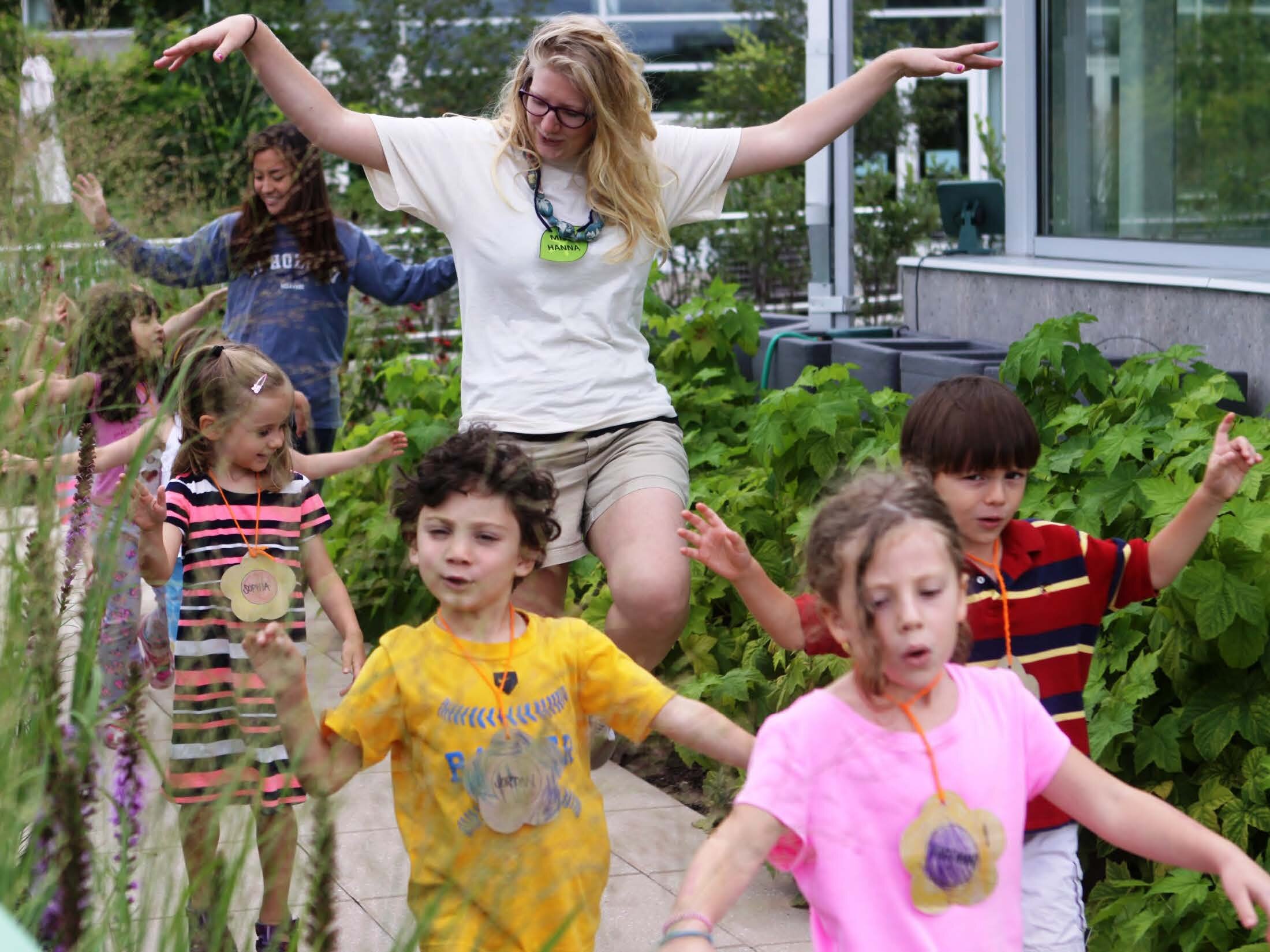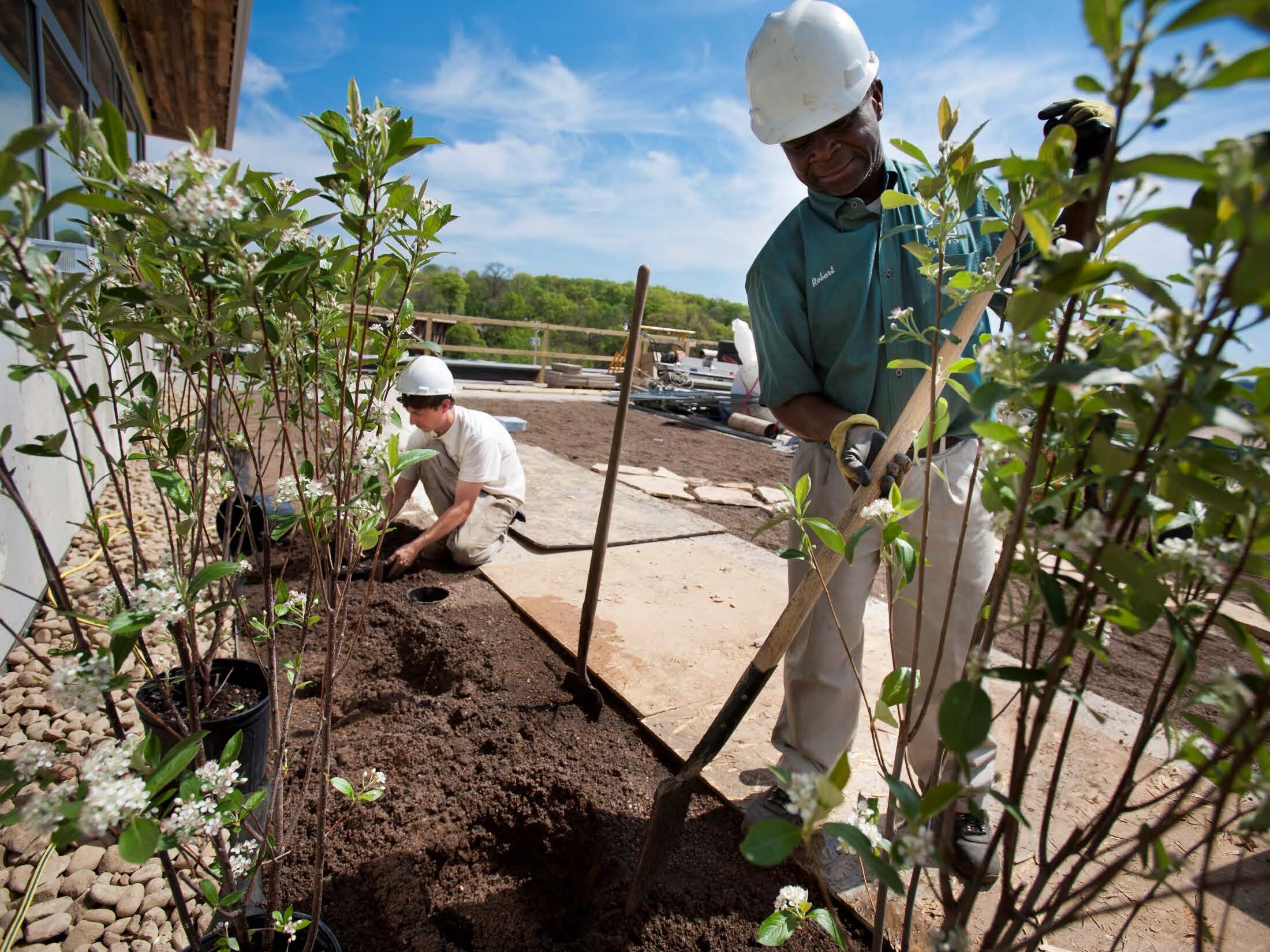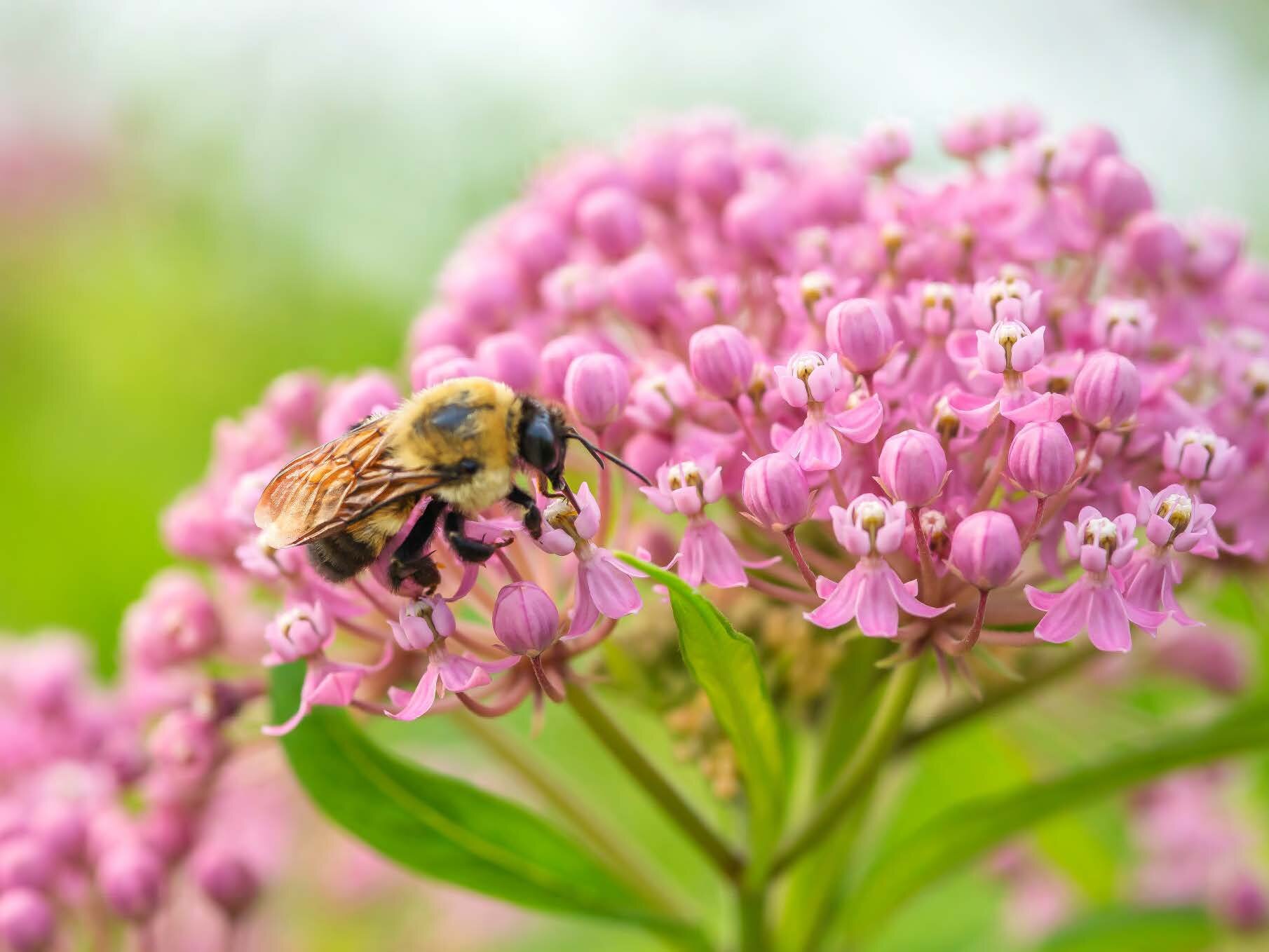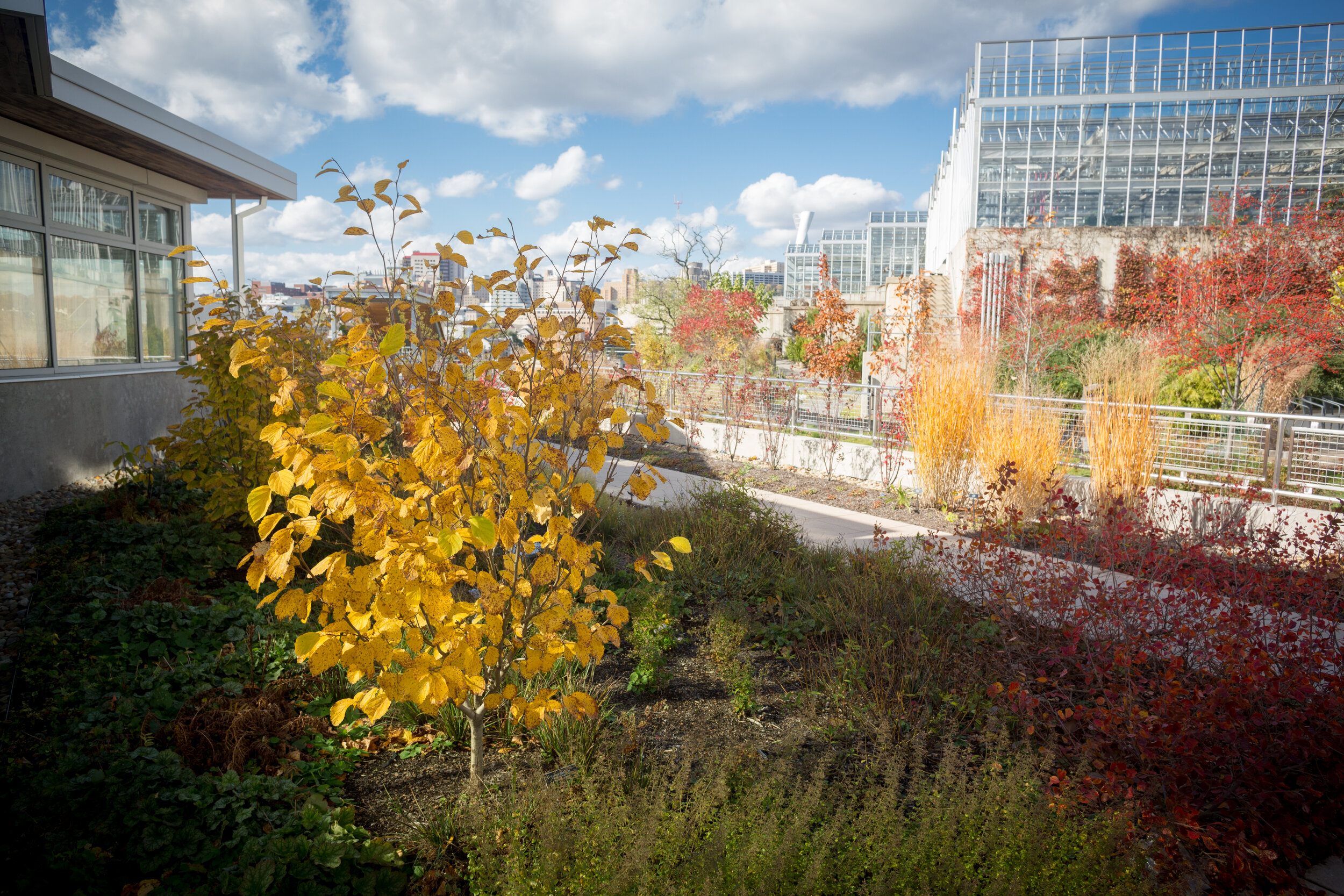Project
Center for Sustainable Landscapes
Location
Pittsburgh, PA
Award Winner
Phipps Conservatory and Botanical Gardens
Project Team
Architect: The Design Alliance
Civil Engineering and Water Engineering: Civil & Environmental Consultants
Green Roof Construction: Burns and Scalo
Integrated Design Facilitation, Energy Modeling, Daylighting Analysis and Materials: 7group, LLC
MEP Engineering: CJL Engineering
Planting Plan, Planting, Maintenance: Phipps Conservatory and Botanical Gardens
Structural Engineering: Atlantic Engineering Services
“When guests explore the Center for Sustainable Landscapes green roof, it helps make clear this notion that we strive to demonstrate at Phipps — that humans are part of the natural world, not separate from it. They can experience first-hand that green buildings aren’t about being “less bad,” rather they are beautiful, engaging spaces that can enhance ecosystem services, which improves both human and environmental health and well-being.”
Demonstrating Sustainability to Catalyze Real Change
Part of the Phipps Conservatory’s mission is to advance sustainability and promote human and environmental well-being through action and research. In support of this mission, the objective was to help transform the way people relate the built and natural environments. The project was designed to be an education and demonstration site to explicate the efficacy of sustainability, and the beauty of living in harmony with the natural world. It is the first and only building project to meet five of the highest green certifications.
The project site is home to more than 100 species of native plants, including 50 on the green roof alone, creating habitat, enhancing biodiversity, and assisting in the stormwater management goals, reducing annualized runoff by 85%.
Community and project partners were welcomed early to the project to contribute energy, systems, computational fluid dynamics modeling, restoration ecology, green building, innovative technology, life cycle assessment and other consulting services. Partnerships were sought with the goal of pursuing environmental research, education and outreach through the involvement of scientists, research fellows and department members so that collaborative research opportunities could create a ”critical mass” and enhance the ability to obtain grants for research of greater scope and importance. Many organizations, associations, government officials, university faculty members and students were invited to participate in early charrettes while a select groups of interested stakeholders were further invited to continue through the design, construction and operational monitoring process as main project partners.
Judges praised this project for its high level of living systems integration for multiple benefits and commitment to engaging multiple stakeholders.
